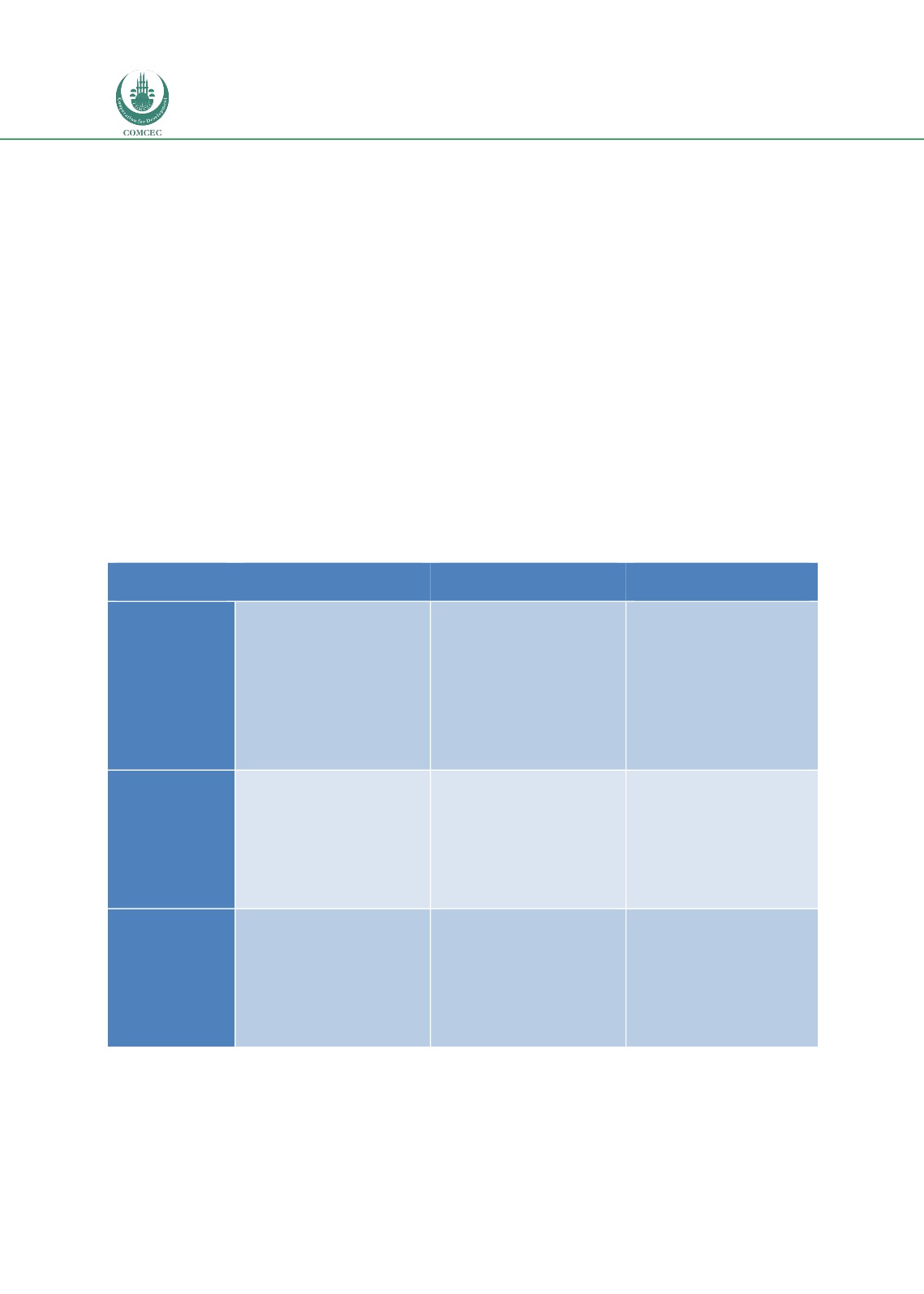

Reducing Postharvest Losses
In the OIC Member Countries
142
groups undertaken in OIC Member Countries and are summarised i
n Table.The losses tend to
be specific to each commodity crop and probably to the specific value chains for a particular
commodity group. For example for cereals physical losses tend to be related to harvesting,
drying, transport, threshing and shelling, sorting, marketing and storage as these are the major
processing and operation steps for this commodity group while for fruit and vegetables it is
poor packaging and transport. Postharvest economic losses were more difficult to quantify but
in all cases are related to the commodity group, the specific value chains and where in the
value chains the losses occur. Economic losses will be more severe when they occur at the
consumer end of the value chain (Naziri et al, 2015) and for higher value commodities such as
meat and meat products, dairy and dairy product and fish and seafood products. Nutrition and
quality losses are also scantily reported on even in the field and desktop studies. There are
some trends that are important those. For example, for biofortified crops (cereals and root
and tuber crops) contains vitamin A, this will degrade more rapidly once the commodity has
been processed and measures will be required to prevent further losses such as removal of
oxygen, and light and or reducing the temperature (Bechoff et al., 2010). These types of
nutrition losses will occur in the absence of physical and economic losses and hence will be
important for policy makers in decision making.
Table 73: Summary of physical, economic and quality losses for the seven OIC commodity
groups
Commodity
group
Physical losses
Economic losses
Quality /nutrition
losses
Cereals
Related to harvesting, drying,
transport, threshing and
shelling, sorting, marketing and
storage
Related to the value chain,
seasonal variation and stage in
the value chain where the
physical loss occurs
General staples and will lead
mainly to calorie losses but
also protein, vitamin and
minerals. Can be an issue for
biofortified cereals, after
processing into flour,
particularly vitamin A. Some
cereals are susceptible to food
safety losses through
mycotoxins and poor storage
will exacerbate this.
Root and Tuber
Crops (cassava
in Nigeria)
Losses occur at the farm,
trading, transport and handling,
processing and retail and
consumption stages for both
Gari and fufu, two main
products produced from fresh
cassava in Nigeria. Of these the
most critical was identified as
harvest and processing
Related to the specific value
chain, seasonal variation in
prices and stage in the value
chain where the physical loss
occurs. For example economic
loss will be greatest if cassava
is processed at the consumer
end as reported in Naziri et al.,
2015.
Physical losses in staples will
lead mainly to calorie losses
but also protein, vitamin and
minerals. Can be an issue for
processed biofortified cassava
(chips, flour etc.), particularly
vitamin A which may degrade
rapidly (70% in 2 months
example for sweet potato)
Fruit and
Vegetables
(tomatoes in
Bangladesh)
Poor packaging and transport.
Related to the specific value
chain, seasonal variation in
prices and stage in the value
chain where the physical loss
occurs. For example economic
loss will be greatest if the fruit
and vegetable is processed at
the consumer end where more
economic value accumulates.
Fruit and vegetables are an
important source of vitamins
and minerals, vitamins and
dietary fibre. Losses during
processing and storage will be
important.
















